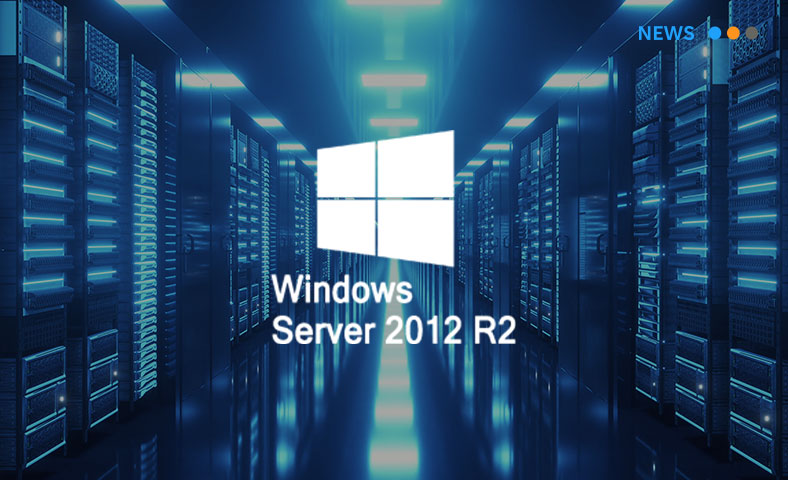Don’t tell me you don’t use Cloud because Security Issues
August 14, 201610 Key Issues when Negotiating your Cloud Services Contracts
September 30, 2016We are already in the phase of the cycle of innovation where Cloud is no longer news, is a common technological option, extended and used to a greater or lesser extent by hundreds of thousands of companies and public institutions around the world. For some of the companies that jumped in recent times on the wagon of Cloud computing, the journey has been relatively quiet, while for others, the results have not been as expected. Nothing should surprise us when new technologies are adopted.
In this section I´m trying to describe in a synthesized and practical manner the main aspects for companies or institutions that are about to start the journey to Cloud Computing, or are evaluating their next steps, as a way to prepare and transform their business models with Cloud being an enabler and one of the main technological pillars, in a new era where the keys to innovation are the mobility, the Internet of things, Big Data, social networks and the customer experience all of them orbiting about Cloud Computing.
While Cloud is already “mainstream” and despite his remarkable rise in the companies, yet most of them “are still thinking about it”. There is a certain and logical fear to the “unknown”, some interested misconceptions and yet some technical and business reasons for avoiding Cloud, some of them actually exist and some other are artificial barriers that are created to stop or slow adopting Cloud when you don’t know or you are not sure what is the safest and less risky way to make the move.
It is necessary to insist on the widespread assertion and to which I fully agree that there is not an equal response for all companies for its Cloud Transition. The roadmap or the response for each company on what, how and when to adopt cloud services is: the one that better enables the benefits expected to that company.
In this introductory section of this chapter, I will try to present a methodological framework that I believe is simple to use and understand, and provide some help and assistance for beginning the Cloud journey or bring some more clarity in the design of your own roadmap.
This framework, that I call Agile Cloud Transition, provides a structured guide whose elements may be used or modified to make it useful in your project and in your company. Take what can be used for your goals and leave out whatever does not fit with them.
Cloud Transition: Adoption and Migration
In this book as I have insisted I don’t try to give scholar definitions, but provide some concepts to avoid confusion. So, I’m classifying Cloud migration as a type of Cloud Adoption. Let me explain it:
When we are referring of “migrating to Cloud” we are referring that one or several components of our current technological environment will be “converted” to some form of cloud technology or cloud service. Later in this chapter we will see that there are several ways and different alternatives in which a current IT system can be migrated.
When we are referring of “migrating to Cloud” we are referring that one or several components of our current technological environment will be “converted” to some form of cloud technology or cloud service. Later in this chapter we will see that there are several ways and different alternatives in which a current IT system can be migrated.
Adopting Cloud is the process of implementing a new system based on the technology and the delivery of Cloud Computing model, being the leading IaaS, SaaS and PaaS. Migration is also a way of adopting Cloud, being the only difference that we based the migration on a previously existing system On Premises. Let’s see some examples:
- The electronic email system, for instance a Microsoft Exchange Server, is installed and running in servers located in the company on premises data center, and the Company decides to migrate it to the Cloud. The two basic options would be:
- Option a) The exact same email system is copied / migrated to a Server located in the Cloud (IaaS), for instance to a Microsoft Azure, AWS or IBM public cloud..
- Option b) Migrate your Exchange server system to a different electronic email system that Works natively in the Cloud as Software as a Service, that would imply migrating the user email accounts, the messages and related data.
- Option c) To a private cloud
- Another example could be a legacy application that was custom developed in the company using any programming and development environment (COBOL, C++, Visual Studio….). To transform such application to be Cloud ready, would mean to use a PaaS for converting such application, which would make a Cloud compliant software, just as the Software as a service are developed for the most part. Then this migrated & converted application can run in the public or in the private cloud infrastructure.
Of course those previous examples of Cloud migration means we are adopting a Cloud computing service model, so as described earlier, migrating to Cloud is one way of adopting Cloud. But let’s look at other examples below:
- The Sales VP of the company considers that our current Customer Relationship Management system is obsolete and does not represent the way the company currently does sales and marketing processes, sales reps don’t use it and information is inconsistent. He is asking to get a new modern Cloud based CRM system…. There are already probably hundreds of SaaS CRM system, including the pioneer Salesforce.com, Microsoft Dynamics CRM online, SAP Cloud for Customer, SugarCRM and many more…. In these cases, and even that within the Cloud CRM deployment there will be a need for data migration, we are talking about adopting a new cloud system, in this case a Software as a Service application.
- After some evaluation the IT department decides that all new applications and systems which will be custom designed and developed in house will be based on a Cloud Platform (Microsoft Azure, Google AppEngine, IBM Bluemix, CloudFoundry….). This is a very clear example of adopting Cloud without the need for migration, even if it is quite possible that later on using the same PaaS the company might actually migrate some of their legacy applications to a Cloud ready environment.
For now, and from a practical perspective, let´s conclude by defining that Cloud Adoption is the process of implementing a new Cloud Service or to migrate a previous IT asset into a Cloud service, that is, base on either IaaS, SaaS or Pass delivery models.
A Model for Cloud Adoption
In the introduction of this book and in the previous Chapter we discussed extensively that there is no a “one suit fits all model”, not in traditional on premises IT and not in Cloud, therefore there can be also many different models for transitioning or adopting Cloud. The model that we present here is just one of them, one that we believe that contains that basic elements that can later be used or modified to satisfy each customer specific requirements for a Cloud Migration.
You are already in that place where everybody in the company is aware of the many benefits that the Cloud services can provide to the organization, but in order to proceed you are also aware –or you should be- that the road isn’t easy and it´s not risk free. Therefore, to have a guide or roadmap that help us to visualize the big picture, the steps, and the issues to consider and then be able to decide which road to take.
The following is a roadmap that I have developed, and which I call “Agile Cloud Adoption framework”. It is Agile because I am a believer of starting in smaller projects and do incremental improvements. Agile does not mean unstructured or without a plan.
The framework includes four main phases which can then be repeated to make further short timeframe incremental improvements:
- Business Strategy Definition Phase. The objective of the initial phase is to clearly which business goals the company is pursuing with the Cloud, identify stakeholders and define the metrics which are to be used to measure the status of the projects, the benefits and the degree of compliance regarding the business goals. Next sections in this chapter describes this and the following phases in greater detail.
- Cloud Assessment and Requirements Analysis Phase.According to the business goals and the scope of the current and future IT landscapes, during this phase both a workload and cloud readiness assessment must be performed, which outcome will be the key deliverables to understand what would be designed, planned and implemented. This is by far the most important phase of a cloud migration, and possible the most complex one. Results from this phase is key for a correct selection of Cloud models and Cloud elements, but also the state of readiness of all elements of the IT and business ecosystem is assessed, so that according to the results, different plans and actions have to be planned and later performed and tested so that the organization is completely ready for the changes. Some of the activities within this phase include System Workload Analysis, Cloud Readiness Assessment at all levels, User Readiness, SLAs, Integration, Compliance, Security and others. A detailed description of this phase is included later in this chapter. Additionally in the Chapter XXX you will find some tools that can help you in this phase.
- Design and Planning Phase. In this phase, the Cloud components and service types are selected based on previous assessment and requirements, and with them you will design the model of Cloud Computing that you´re going to implement (or just some). The final model might look like a hybrid model, mainly for those companies that have their own data centers and on premises systems and applications. You will probably want or better, you might need your new or migrated cloud services to be well integrated with some of the private applications, which are not yet to be migrated to Cloud. In this phase you will also plan for a new governance model for the new IT services, Security, integration technology or even your training needs and several others according to the reach of your migration project.
- Solution Implementation and Deployment. This last phase is either one or several subprojects according to the scope and goals. This is the phase for the setup, configuration, implementation and deployment of the different Cloud Elements or services that have been designed in the previous phase. Each specific solution must be deployed according to the general plan. There might be different approaches for these subprojects, as it´s not exactly the same to implement an Enterprise Cloud email solution (SaaS) than a Human Resources recruiting software (SaaS) than to migrate your SAP ERP to Microsoft Azure Compute Services (IaaS).
Additionally, this methodological framework includes activity stream that spans across all phases, like the strategic project management and the organization change management. Once a migration project or adoption is deployed and implemented, it will be the time for measuring results and comparing with the metrics and goals that were initially established.
Summary
Let´s summarize some of the points of this Chapter:
- Cloud computing is the logical evolution of IT engineering and economic models. This is a megatrend that is hardly impossible to avoid, since you as consumer or as business user are already using every day.
- A strategic Cloud computing adoption makes possible a business model transformation with speed and agility previously unknown
- Every business and organization has different needs and motivations for Cloud adoption, and each will take its own roadmap for achieving their goals. There is no a common formula to guarantee success for each, but a framework can be a good starting point to such roadmap.
- A Cloud Adoption Framework is a tool or help guide to make you are of the most important aspects and some of the critical activities in a Cloud Adoption project. Take it both as a protocol template and a collection of recipes. Use those that you clearly need or those that you see that align well with your business goals.
- It is important to measure and manage the risks, but you should also manage and measure the potential benefits. Don’t let risks to stop you from action.
- Although this topic will be discussed with much further detail in Chapter XXX, it is important though to insist in the idea that neither CIOs or IT departments are in risk of losing their job, at most at evolving the activities and responsibilities related to the job, but, when has not been like that? With Cloud, IT is critical and probably more relevant than ever before. You will see later why.




